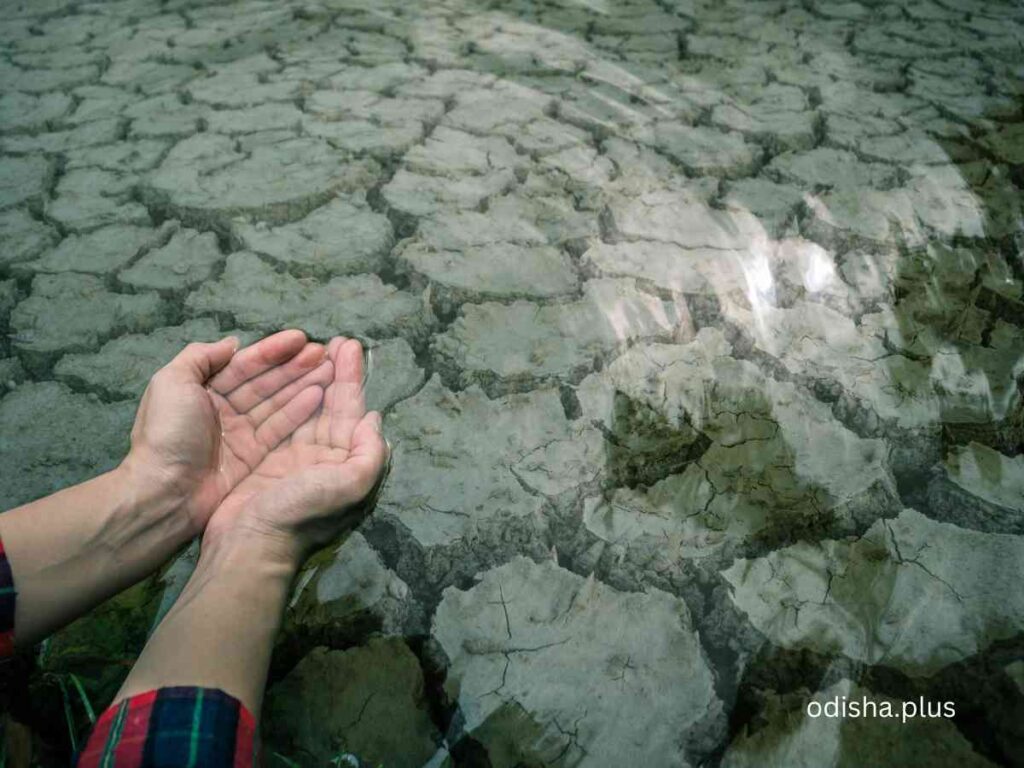It is estimated that by the year 2040, there will not be availability of adequate potable water for human consumption
Suresh Chandra Sarangi

“Water, Water everywhere, not a drop to drink.” wrote English poet Coleridge, in his poem ‘The Rime of The Ancient Mariner.’ The poem published in 1798, evokes a lot of sentiment, once we understand the nature of the global water crisis. The Indian feature films, documentaries and short films also depict the struggle, conflict and challenges about water in films like Sudh, related to water purification and Sukha, highlighting the water scarcity in India.
Pani re Pani conveys the message that water is essential for life forms on Earth and needs to be monitored by both the government and people to bring to the fore and to the center of discourse that water is the elixir of life without which the sustainability of any life form on planet Earth is incomprehensible. Kaun Kitney Paani Mein is also the first mainstream Hindi film that speaks about water stress. Blue Gold, a Canadian film on water wars is a poignant story through a documentary film that examines the causes of the water crisis, including pollution, thinning, and wasteland destruction, and very emphatically unfolds the struggle of people fight for people’s rights to water around the world.
Other movies and documentaries like A World Without Water, Last Call at the Oasis and Dark Water are all poignant stories speaking about water voices, flow running dry and poisoned water are examples of struggles for potable water. So the fight for the availability of potable natural water has already begun as the most natural resource and seminal resource for the sustainability of life on Earth.
The chemical formula for water is H20 which means each molecule of water consists of one Oxygen atom and two Hydrogen Atoms. The United Nations has taken in right earnest and recognized the necessity of water as a human right and everyone enjoys his or her right to access safe, affordable and sufficient water for personal and domestic use. The UN’s Sustainable Development goals provide for aims to ensure that everybody receives water on a priority basis by 2030.
Mexico to Bangalore
Water scarcity has arisen in the world due to a multiplicity of factors like climate change, uncontrolled urbanization, population explosion, pollution and development, drought and dry spells and overuse of groundwater, despite the pious intention and the encouraging steps. The consequences and ramifications of the global water crisis have been felt everywhere in the world recently like Cape Town, Mexico, Bangalore, California, Australia, Brazil and Africa and counting.
Cape Town’s four million were affected. Beijing also suffered. It is estimated that by the year 2040, there will not be availability of adequate potable water for human consumption. The crisis is getting worse day by day and mankind appears to be at an inflection point. Without water, we all will die. It is understood that water, the most valuable of natural resources, is labeled as 21st-century petroleum.
The world needs 326 million trillion of groundwater as per an estimate. Sea water constitutes 70%. And out of all types of water, 97% is not usable. 2% of water is contained in frozen icecaps. Only 1% is potable groundwater which is depleting gradually. Today, Kuwait as a country has the lowest per capita water use and Singapore would have been in soup if they had not gone for water recycling. Surface water has a price for collection and distribution. Again access to potable water is not easily accessible.
Maximum water is used for agriculture and industry. In a bottle of Coca-Cola, water is 98%. 74 liters of water is required for producing a glass of beer. For 1 cup of coffee, 130 liters of water is required in the plantation to grow the plants. For the creation of T-shirts, 2500 liters of water is required. For those who are eating meat of any type the water requirement is still higher. Where will the water come from? The irrigation stem is not efficient and including infrastructure leakages more than 40% of water is lost.
About 2 million liters of sewage disposal and industrial waste make the ground, river and lake water toxic and not useful. Due to climate change and dry spells, the polar icecap as well as Himalayan ice caps are melting and that intensifies water scarcity. There are violent conflicts between neighboring countries and states in India as well. The Kaveri water dispute in India is an example.
Water scarcity is at the center of all these conflicting issues. Contamination and drying up of groundwater used by industry, agriculture and households is a real problem and a threat to water affordability. Desalination of seawater into potable drinking water, a cumbersome process needing huge investments is not encouraging countries to increase the source of water. Consumer prices are high for a bottle of potable water, and the prices of water in the coming days would go on increasing which would be detrimental to the interest of poor and needy.
The biggest problem is the recharging of depleted groundwater levels. In some areas, people go to collect water by walking 6 to 8 kilometers. Conserving water and recharging the aquifers and rainwater harvesting storage may be a better solution. Cultivation of vegetables, cereals, or fruits is limited and thus it intensifies and increases food inflation, only because of the non-availability of water.
It is such an acute problem that out of 1% available groundwater, only 0.45% can be used. It is estimated that by the year 2050, global food prices will skyrocket. The decline in crop yield is ascertainable. Loss of biodiversity, forest cover and scanty rainfall, all add to the problem. The water crisis is complex and challenging. Solar water pumps can be very useful to harness water and ensure rational distribution.
The World Water Council aims to improve the efficiency of water use in agriculture, reduce industrial wastewater emissions and decrease water loss in urban areas. The council takes the responsibility of achieving and balancing the development of the carrying capacity of its water resources, with emphasis on an integrated approach to water governance. The council, while executing the mandate wants to introduce resilience against water-related disasters. Its policy is to engage future generations in charge of water conservation. Building a multilateral platform for water security and water exchange to increase water resilience is its motto.
Rainwater Harvesting
India is one of the most water-stressed countries and its burgeoning population of 1.4 billion further aggravates the problem of water scarcity. The total water resources available to India are only 4% of the world’s water resources, but 18% of its population. Excessive groundwater extraction, mostly in Delhi and NCR area is a cause of concern. India suffers from poor water management and what is the need of the hour is water treatment.
It is good that the government of India aims to provide water connections to each household by the end of 2024. Rainwater harvesting is a priority area and on-site wastewater treatment is the need of the hour. India is on an ambitious plan for large-scale wastewater treatment. Corporates are trying to help improve water conservation under corporate social responsibility.
Life originated in water in the sea and may end in future life, because of lack of it. To unlock the secrets of water is as important as the preservation of water. This unique Earth has provided a lot of resources for human civilization, out of which water is the most precious and humankind must internalize that so that we can maintain our biosphere, as well as help survive the water crisis being confronted in our daily life.
The problem is real and challenging. It requires the collective endeavor of all the stakeholders to save human beings, from the looming and impending disaster and help domesticated animals and other animals. Conservation, equitable distribution is ensured by both the government and the public together.
The UN level participation and funding are the need of the hour. Soil moisture retention would help our flora and fauna for which it has to be ensured that the water of glaciers, lakes and rivers remain uncontaminated and continuous efforts to be made for innovation, government support and governance for the life forms in the planet. Then we can say water is the elixir of life.
(The writer is a former General Manager of Bank of India and currently a visiting professor at KIIT School of Management. Views expressed are personal)


























